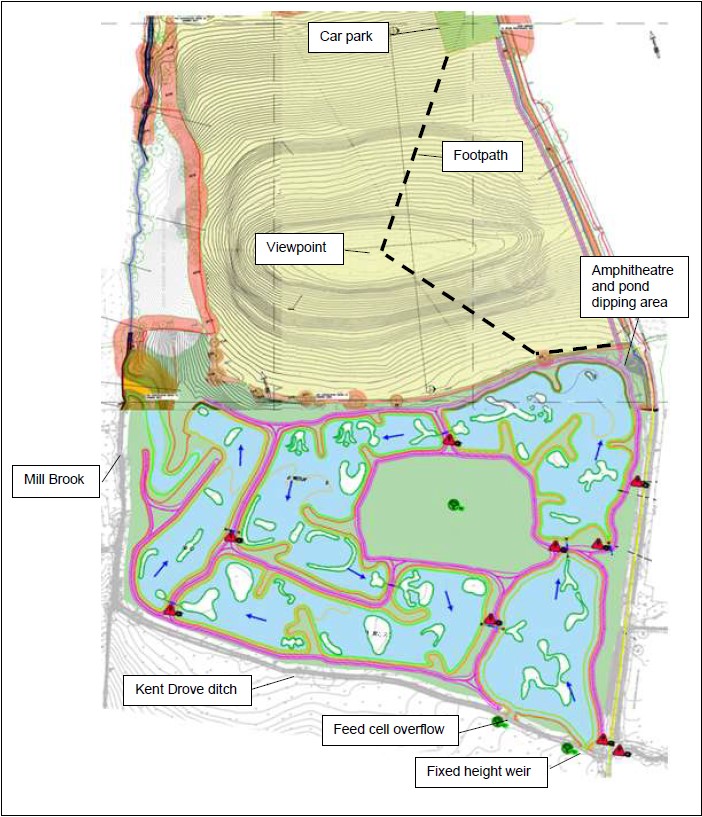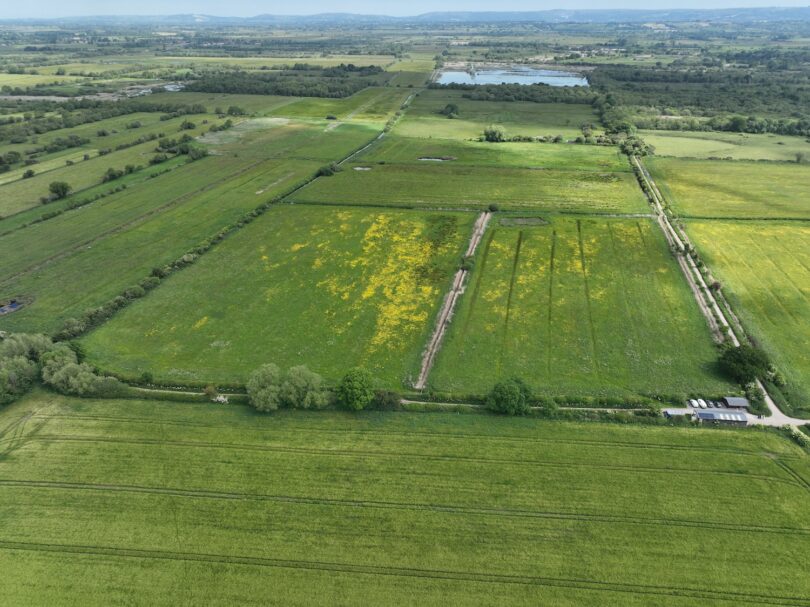Multi-million pound plans to further protect one of the most important landscapes in England by using natural methods to reduce harmful nutrients found in river water have been revealed this week.
Wessex Water, together with its sister engineering and construction company YTL Construction, has outlined ambitious proposals to create new wetland habitats as an Integrated Constructed Wetland within the Somerset Levels and Moors, an internationally protected site renowned for its wetlands, birds, and wildlife.
Working in partnership with other organisations, such as Natural England and the Environment Agency, would see the £5 million investment made at more than 25 hectares of land owned by Wessex Water adjacent to the Hawk and Owl Trust’s existing nature reserve, just north of the village of Shapwick, between Bridgwater and Glastonbury.
The two-part site would see the creation of an Integrated Constructed Wetland and a new grassland site with the ambition for this land to become a haven for wildlife under the stewardship of the Hawk and Owl Trust within the Somerset Wetlands National Nature Reserve.

This Integrated Constructed Wetland aims to reduce the concentration and impact of nutrients in agricultural run-off, the flow of which would travel through the wetland system, using natural physical, chemical, and biological processes to treat and improve water quality.
Nutrients – which can come from agricultural fertilisers, farm slurries, septic tank discharges and domestic wastewater – can cause large growths of algae and floating plants, such as duckweed, in slow-moving watercourses like those in the Somerset Levels and Moors.
These can damage plants and animals through a variety of effects, including oxygen depletion – a process known as eutrophication.
Unlike typical treatment wetlands, Integrated Constructed Wetlands can appear as very naturalised systems as they are designed to integrate into the surrounding environment. They provide additional benefits such as water flow regulation, enhanced biodiversity and wildlife habitats, as well as recreation space.
Such wetlands are being increasingly explored as alternatives to treat a variety of water sources such as farm runoff, wastewater or, as in this case, river water.
The proposals will now be scrutinised by Somerset Council planners and, if successful, the six-month construction project would get under way in the summer of 2026.
Wessex Water Senior Environmental Scientist, Lorraine Isgar said: “We’re committed to working with partners to explore options for natural treatments to improve the quality of water in our rivers and streams and this exciting project would test their effectiveness.
“This Integrated Constructed Wetland aims to reduce nutrients, in particular phosphorus, before reaching the local watercourse that feeds the Catcott, Eddington and Chilton Moors Site of Special Scientific Interest (SSSI), part of the wider Somerset Levels and Moors, as well as provide additional benefits to wildlife and people.
“The proposed 13-hectare wetland system will divert flows from the Kent Drove Ditch to pass through the newly-created wetland habitat, which will be planted with native plants before returning to Mill Brook to the north-west of the field.
“The material from the excavation of the wetland will be used to create 12 hectares of low-nutrient grassland on an adjacent field to the wetland field to further enhance biodiversity and connect the site to the existing Hawk and Owl Trust Shapwick nature reserve.
“Working with stakeholders and in particular the Hawk and Owl Trust has been essential for designing a wetland and grassland habitat that can provide not only water quality benefits, but also valuable wildlife habitat and facilities for people to enjoy.”
A masterplan for potential footpaths, pond dipping areas, educational facilities and improved access to the site is also under development in partnership with the Hawk and Owl Trust.
Hawk and Owl Trust Operations Director, Adrian Blumfield said: “This project will deliver significant benefits to the National Nature Reserve, creating new habitats and supporting the creation of new visitor facilities to allow greater numbers of people to learn about our important conservation work.
“We have been working on this project for several years and it is fantastic that we are moving closer to delivering these significant enhancements.”
Wessex Water has already carried out work to enhance the biodiversity value of the wetlands and surrounding land around Durleigh Reservoir, in Somerset.
The Durleigh reservoir wetlands were created on areas of two fields previously used for arable farming and has recently seen the creation of ponds and woodland to create a mosaic of habitats, to further enhance the biodiversity of the area.
The company is proposing to invest more than £1.1 billion to improve water quality with the removal of 1,550 tonnes of nutrients in waterways as part of its business proposals between now and 2030 – and has asked the Competition and Markets Authority (CMA) to review how much it can invest in vital water and sewerage improvements over the next five years.
This comes after the industry regulator Ofwat’s final determination on Wessex Water’s five-year business plan allowed for £4.2 billion of total expenditure – 17 per cent short of what the company’s own calculations have shown are required to meet its obligations and customers’ expectations, and support growth in the region.
Related stories:
Wessex Water research reveals environmental benefits of wetlands







